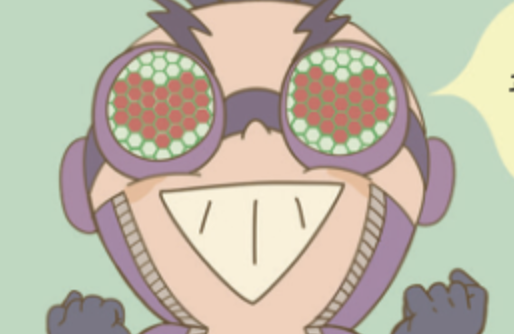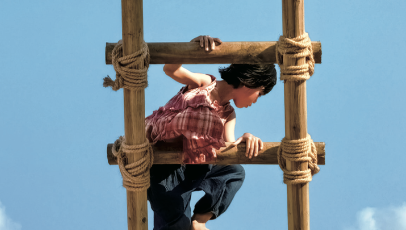오래전 멸종된 도도새의 새로운 모형이 에딘버러에 있는 스코틀랜드 왕립 박물관의 키치너씨에 의해 제작되었다. 이 새로운 모형의 도도새는 흔히 생각해 왔던 것보다 훨씬 멋있어서 그 새가 더이상 존재하지 않는다는 슬픔만 더해주고 있다.
도도새와 인류와의 관계에 관한 역사는 지난 1510년도에 마다가스카르섬 동부에 위치한 인도양의 마우리티우스 섬을 포르투갈 선원들이 발견한 때부터 시작된다. 그 당시 그 섬은 아랍상인들에겐 알려져 있었으나 여전히 무인도로 남아 있던 곳이었다. 길이 38마일, 폭29마일로 7백70평방마일의 타원형인 그 섬은 미국 로드아일랜드주의 4분의3가량의 면적이 된다.
포르투갈 선원들은 그 섬을 그냥 방치했는데 1598년도에 네덜란드인들이 찾아와 그곳을 네덜란드 총독의 이름을 따 '나소의 마우리스'라고 명명하였다. 그 이름은 그후 라틴어로 마우리티우스가 되었다.
네덜란드인들은 그 섬을 개척코자 시도했다가 실패했다. 프랑스인들이 1721년도에 점령한 것이었다. 그들은 그 섬 때문에 영국과도 전쟁을 했으나 마우리티우스공화국으로 독립되던 지난 1965년도까지 프랑스가 식민지로 차지하였다. 이제 인도인과 아프리카의 후예가 대부분인 그 나라의 인구는 약 1백만명이다. 그러나 마우리티우스 국민들에 대한 존경심이 없어서가 아니라, 그 섬이 유명한 주요 이유는 바로 더 이상 존재하지도 않는 도도새 때문이다.
섬을 탐험하고 그 새를 발견했음을 처음 보고한 것은 포르투갈사람들이었다. 그 새는 칠면조보다 더 크고 무게가 50파운드가량 되는 큰 새였다.
그 새의 깃털은 몇군데 흰 부분이 있는 가운데 주로 회색빛이었고 살찐 노란 다리를 가지고 있었다. 나는데는 전혀 쓸모없는 조그마한 날개와 흰 꼬리털의 모습도 지녔었다. 가장 두드러진 특징은 머리부분으로서 갈고리모양으로 끝이 까만 부리를 뽐내는 점이었다.
이 새는 비둘기계의 일원으로서 크고 무서워할 줄 모르는 비둘기라고 설명되곤 한다. 이 새는 오로지 마우리티우스섬에만 살았다. 연관이 있는 종족인 솔리테어라는 새는 근처 리유니온섬이나 로드리구에즈섬에도 살았지만 말이다.
이 마우리티우스의 새는 특별한 적들이 없어 자기 방어를 위한 아무런 방법도 개발하지 못했다. 날지도 못하여 땅에만 살면서 어떻게 할줄도 모르는 이 새는 포르투갈인들에게는 참으로 어리석게 보여 이름이 '도도'라고 붙여지게 됐다.(포르투갈어로 '도도'란 '바보'나 '멍청이'를 뜻한다.) 마우리티우스에 사람들이 살기 시작하면서 개척자들은 마음대로 도도를 죽였고 사람들을 따라온 동물들도 마찬가지였다. 당시에는 희귀동물을 보존코자하는 생각도 없었으며 자연으로부터 아주 사라지기 전에 몇이라도 구제할만한 동물원같은 제도도 없었다. 1698년에 이르자 마지막으로 남아있던 도도까지 죽음을 당했으며 정말 훌륭하고 흔치 않은 이 동물체는 영원히 사라져 버린 것이다. 근처의 섬에 있던 연관이 있는 새조차도 그후 몇십년이 지나지 않아 멸종돼 버렸다.
이제 도도새는 우리가 흔히 쓰는 '도도새같은 죽음'이라는 말에서만 나타난다.(미국인들은 무슨 일이 회생할 가능성이 전혀 없을 때 도도같이 죽었다고 표현한다. *역사주)이 어휘는 도무지 시대에 걸맞지 않게 사는 사람이나 꼭 막힌 보수성만을 고집하는 사람을 지적할 때도 사용된다. (가련한 도도새여! 고작 이런 표현을 위해서나 기억되다니.) 우리는 도도새의 모습을 잔존하는 머리뼈 한개, 다리뼈 두 세개 정도 등을 토대로 만든 그림들을 통해 알고있다.
그 모습은 루이스 캐롤의 '이상한 나라의 앨리스'라는 동화책의 제3장에 등장하는 도도에 관한 설명에 가장 잘 그려져 있다. 유명한 삽화가인 존 테니엘씨는 도도새를 두장 그렸는데 그중 도도가 자신의 골무를 상품으로 대신하여 앨리스에게 건네주는 장면은 주목할 만하다. 그 그림에서 도도는 어색한 옷차림에다 어기적대는 걸음걸이를 쉽게 연상할 수 있는 뚱보새로 그려져있다. 그러한 행동은 바로 그 새의 이름과 맞아 떨어지고 왜 멸종되고 말았는지를 설명하는데 도움이 된다.
그러나 키치너씨는 그 그림이 사실과 다르다고 생각한다. 어쩌면 그 그림은 잡혀서 운동도 못한채 너무 많은 먹이만 먹게 된 새를 토대로 한 것인지도 모른다. 또한 그 새가 칠면조보다도 컸다고 했던 평범한 표현에 영향을 받아 사람들은 과식하도록 양육한 칠면조를 연상했는지도 모른다. (누가 장담할 수 있으랴! 만일 도도가 보존됐다면 우리는 지금 도도 사육장을 가지고 칠면조 고기보다도 더 맛있는 도도 고기를 즐기고 있을는지 모른다.)
대신에 키치너씨는 보다 날씬한 모습의 초기 그림들을 참고하여 훨씬 덜 둔한 모습의 모형을 제작했는데 이는 도도가 제법 볼품있게 달릴 수도 있는 듯한 느낌을 자아낸다. 사실인즉, 멸종된 피해자에게 꼴불견의 모습이라는 모욕까지 추가시킬 필요는 없는 것이다.
생물체 종족간의 상호관계를 설명하는 예로서, 마우리티우스엔 열매가 도도의 소화기관을 먼저 통과하지 않고서는 그 씨앗이 싹트지 않는 나무가 있다. 도도의 위산이 그 씨를 마구 괴롭혀서 드디어 땅속에 묻히게 되면(거름과 함께 ) 싹을 틔우는 것이다. 마우리티우스에 있는 이러한 유형의 모든 나무는 이젠 적어도 3백년이상의 고목들이다. 새로운 나무의 싹은 돋아나지 않을 것이며 결국은 그 나무들도 '도도새 같은 죽음'을 당할것이다.
A new model of the long-extinct dodo has been prepared by A.M. Kitchener of the Royal Museum of Scotland in Edinburgh. The new model shows a bird that is sleeker than the one usually pictured, and it can't help but make us sadder than ever that the dodo no longer exists.
The history of humankind's relationship with the dodo begins in 1510 when the island of Mauritius in the Indian Ocean, due east of Madagascar, was sighted by Portuguese sailors. Although the island was konwn to Arab traders, it was still unoccupied at the time. It is a roughly elliptical island, 38 miles by 29 miles and with an area of 770 square miles, about three-fourths the size of Rhode Island.
The Portuguese left it unoccupied and the Dutch came across it in 1598 and named it for the executive head of the Netherlands, stadtholder, Maurice of Nassau. The island received the Latin version of his name and became Mauritius.
The Dutch tried to settle the island and failed. It was taken over by the French in 1721. They fought the British over it but it remained French, more or less, until 1965, when the island gained its independence. It now has a population of about a million, mostly of Indian and African descent. With all due respect to the people of Mauritius, however, the cheif claim to fame of the island is a bird that no longer exists.
The Portuguese were the first to report seeing it after they had explored the island. It was a large bird, larger than a turkey, and weighed about 50 pounds.
The bird had grayish feathers that were white in some regions and stout yellow legs. It had tiny wings that were useless for flight and a tuft of white feathers for a tail. Its most remarkable feature was its head which sported a black bill, with a strongly hooked. This bird was a member of the pigeon family and is frequently described as a large, flightless pigeon. It existed only on Mauritius, though related species, called solitaires, existed on the nearby islands of Reunion and Rodriguez.
The bird of Mauritius, having no particular enemies, had never developed methods of self-defense. Earthbound and helpless, it seemed simple-minded to its Portuguese discoverers who gave it the name we call "dodo."(It is from the Portuguese "doudo" meaning "simpleton.")
Once Mauritius was finally settled, the settlers killed the dodo freely and so did the animals that came along with them. At the time there was no feeling that rare species ought to be preserved and no system of zoos that could save some animals when they disappeared from the wild. By 1698, the last dodo was dead, and a really magnificent and unusual organism was forever gone. The related species on neighboring islands were also wiped out within a few decades after that.
Now the dodo exists only in the common phrase "dead as a dodo." The word is also used to signify any person who is hopelessly behind the times, and who finds refuge in blind conservatism. (Poor dodo! To be remembered for that.)
We know of the dodo's appearance from the diagrams that were made of it, from a few skeletons that exist, from one surviving head and a couple of surviving feet.
Its looks are best recalled from the dodo that appears as a character in Chapter 3 of Lewis Carroll's "Alice in Wonderland. " John Tenniel, the famous illustrator, had it appear in two of his drawings, especially the one in which the dodo is handing Alice a thimble (her own thimble) as a prize. In the illustration, the dodo is pictured as an obese bird that we can easilly picture as waddling about in ungainly fashion. Its behavior would thus match its name and help explain why it is extinct.
Kitchener does not think that is a true picture. It may have been based on some captive birds that were overfed and kept without the opportunity for activity. It may also have been influenced by the common statement that it was larger than a turkey, so that one thinks of domesticated, overfed turkeys. (Who knows! If dodos had been saved, we might now have dodo farms and dodo meat that might be superior to that of turkeys.)
Instead, Kitchener turned to earlier drawings that showed thinner birds and has produced a model that seems far less ungainly, and that may mean it was able to run in reasonable fashion. There is, after all, no use in adding the insult of ungainliness to the injury of extinction.
As an example of the interrelationship of species, there is a tree on Mauritius whose seeds will not germinate unless the fruit has first passed through the digestive track of the dodo. The dodo's digestive juices scarify the seed and when it is finally deposited (with fertilizer) it sprouts. All the tree of this type on Mauritius are now at least 300 years old. No new ones will sprout and, eventually, the tree will be as dead as-well-a dodo.
(c)1990. Los Angeles Times Syndicate
이 기사의 내용이 궁금하신가요?
기사 전문을 보시려면500(500원)이 필요합니다.
1990년 11월 과학동아 정보
🎓️ 진로 추천
- 생명과학·생명공학
- 역사·고고학
- 환경학·환경공학

















